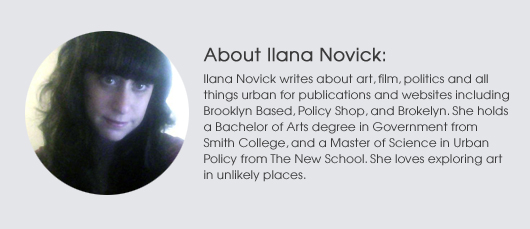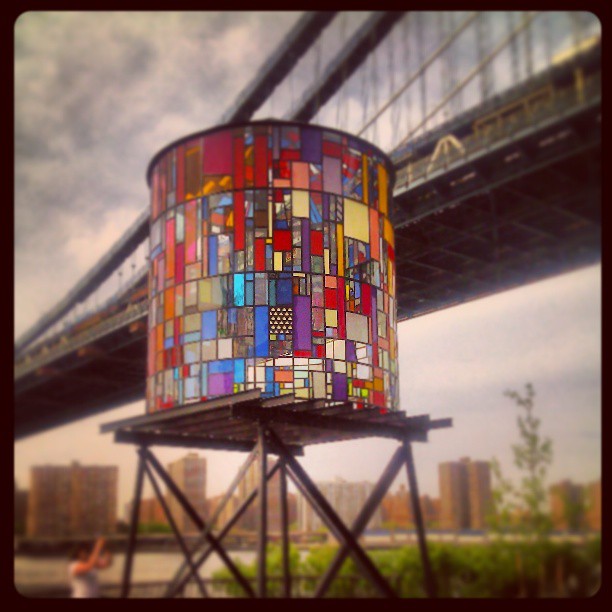
NEW YORK – Tom Fruin’s Icon series celebrates architectural marvels from cities around the world by rendering them in stained glass. Each of the icons represents a unique symbol of the city’s architecture or economy, including a stained-glass smokestack in Detroit and a billboard in LA. For New York, Fruin began with a subject both utilitarian and iconic (and admittedly, a frequent obsession of mine): the water tower.
Watertower 3: R.V. Ingersoll watches over the City from its perch on top of 334 Furman Street, looking like stained glass. Fruin’s is not the stained glass of Catholic churches and Tiffany lamps. R.V. Ingersoll is a reference to a 2002 quilt made from found drug bags collected in and around the Ingersoll Houses, a public housing project. The colors of the bags correspond to those on the water tower. It made me feel a little queasy to learn this, that the artist literally built a quilt out of the physical manifestations of addictions and suffering, in a housing project so close to the wealth of DUMBO and Brooklyn Heights.
This time around, no drug paraphernalia was included in the making of tower. Instead, nearly 1000 multicolored plexiglass scraps that, according to a Brooklyn Magazine interview with Fruin, are either donated by Evonik Crylite or salvaged from Lower East Side sign shops, and held together with steel beams to give the sculptures structure. The water tower on Furman Street is illuminated by sunlight during the day, and uses renewable energy collected from solar panels to power the LED systems that create a light show at night.
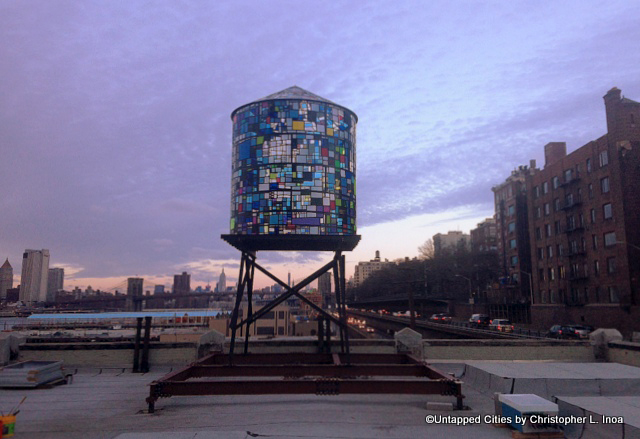
In October 2014, Fruin brought Kolonihavehus (2010) to join the family of installations after a world a tour that included stops in Sweden, Denmark, Austria, and the Czech Republic.
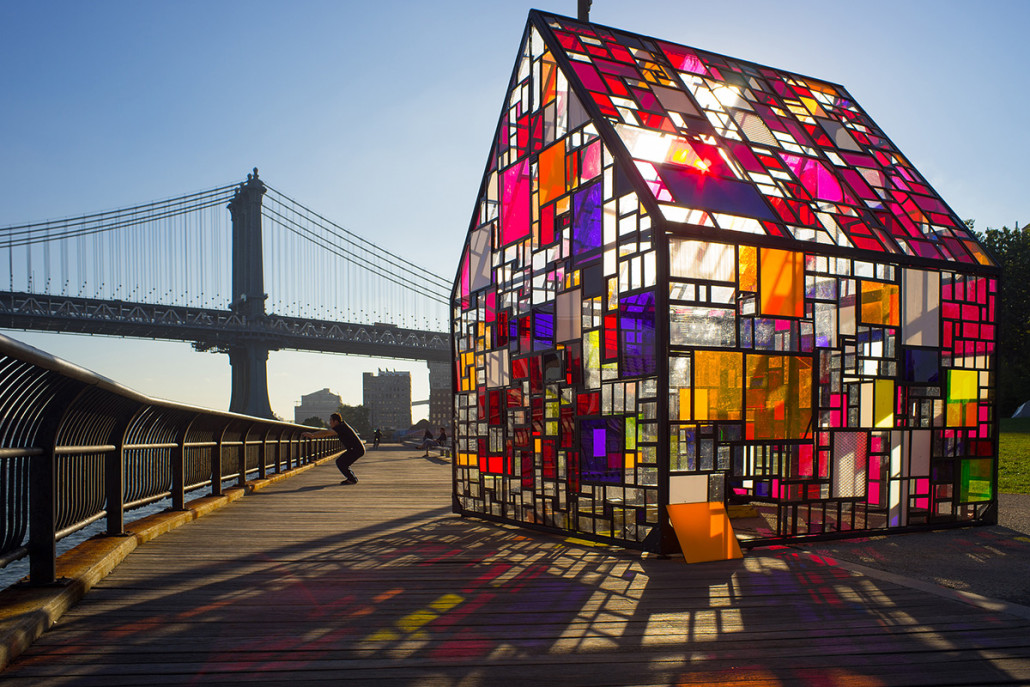
It’s a playful response to the buildings and bridges around it; the bright colors and sharp lines make the house look like the louder, wilder younger sister of the granite and steel buildings on the skyline across the river.
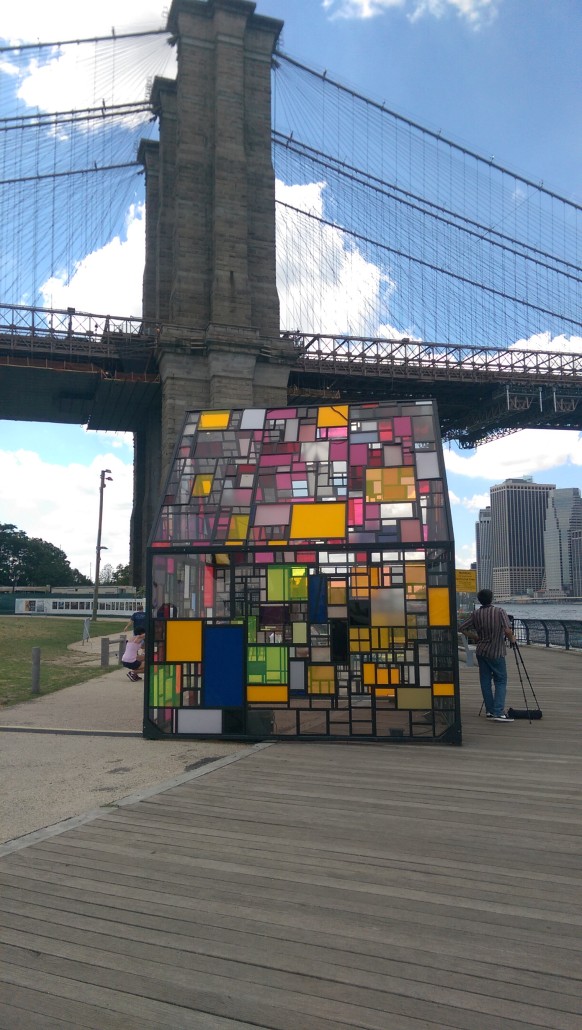
Both sculptures will be around through the fall.



